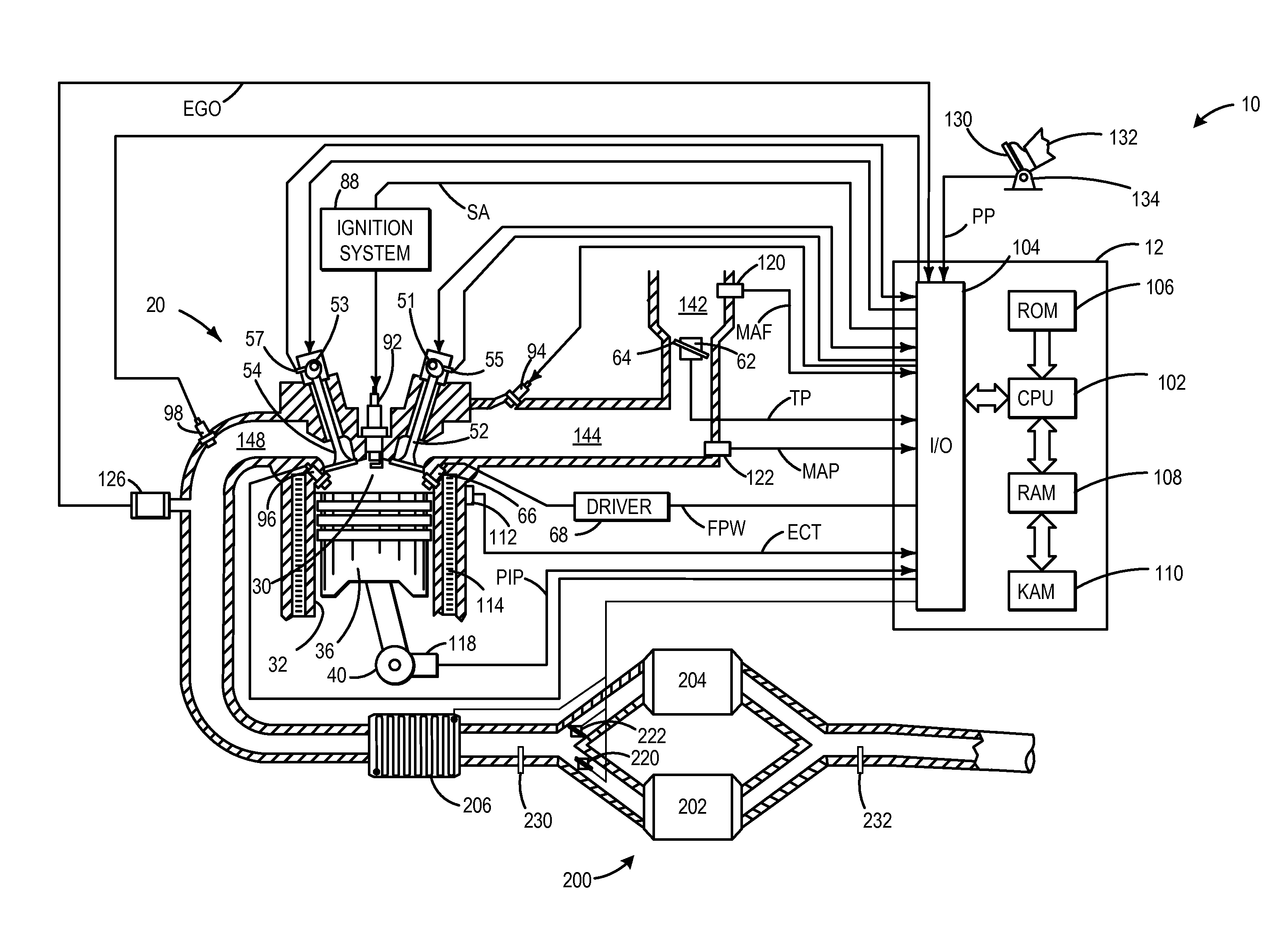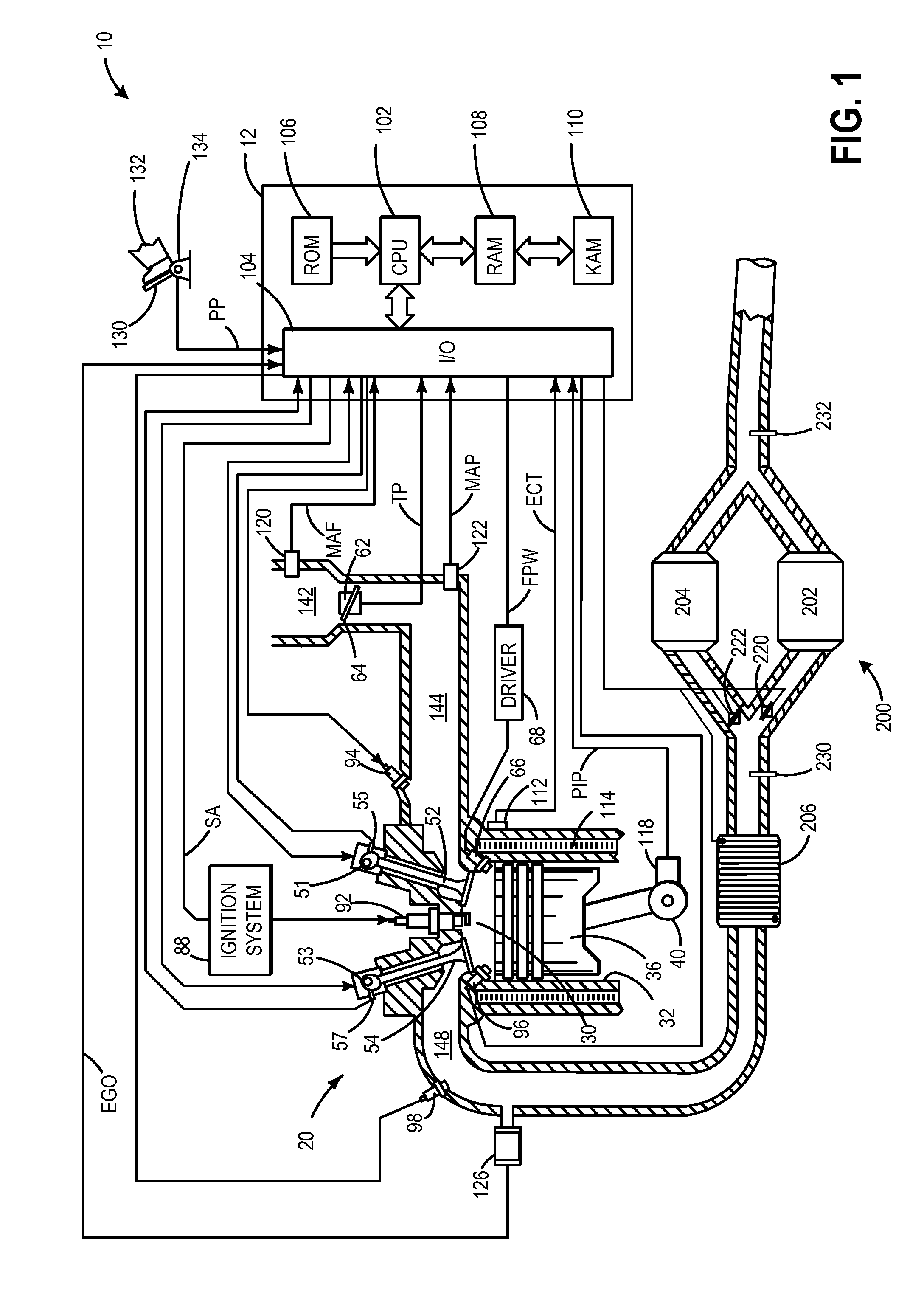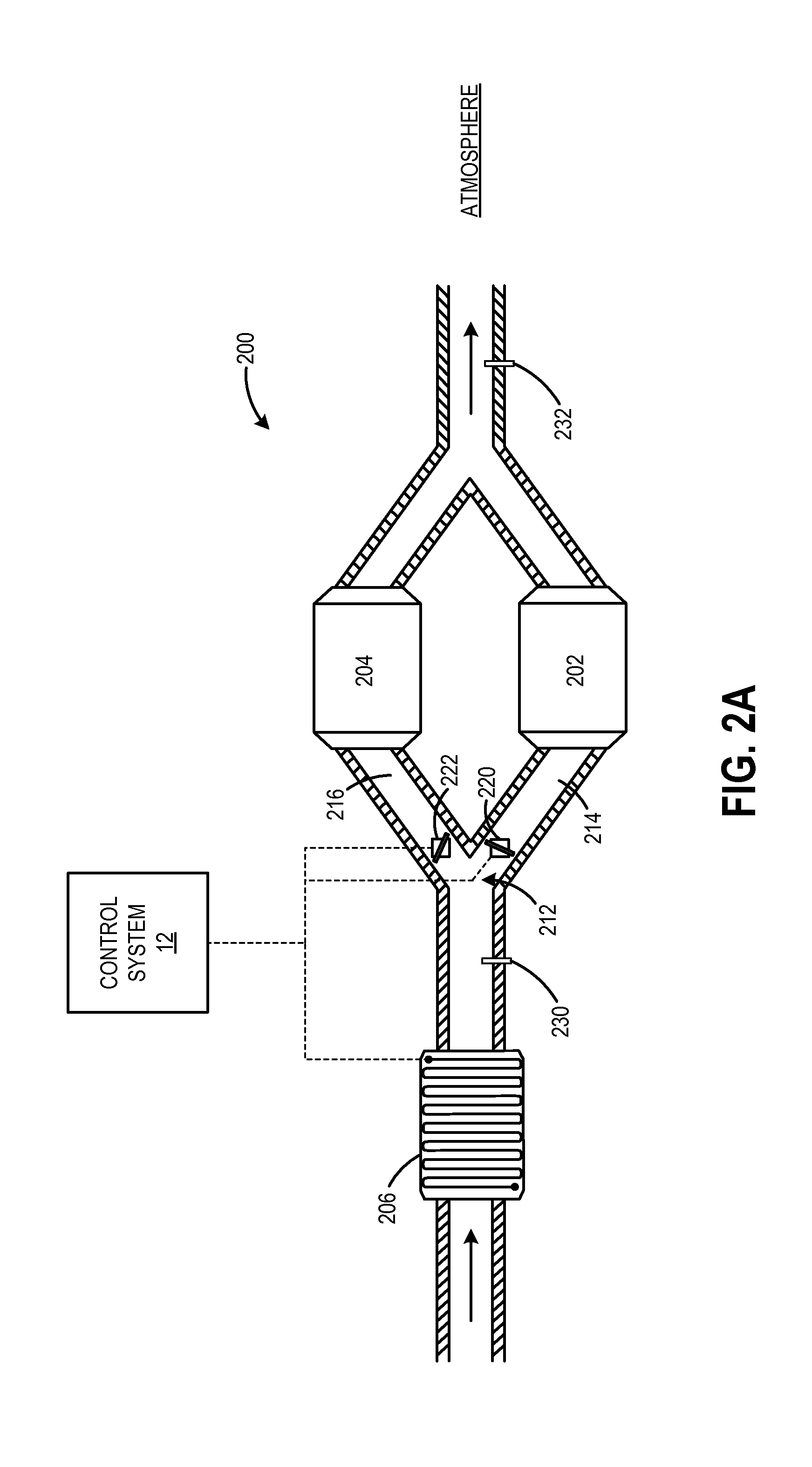Systems and methods for differential heating of exhaust catalysts
- Summary
- Abstract
- Description
- Claims
- Application Information
AI Technical Summary
Benefits of technology
Problems solved by technology
Method used
Image
Examples
Embodiment Construction
[0015]The following description relates to exhaust aftertreatment systems and methods for enhancing exhaust gas treatment to reduce emissions therefrom more efficiently. In one example, an exhaust gas aftertreatment system comprises a first catalyst positioned in a first exhaust pathway arranged in parallel to a second catalyst positioned in a second exhaust pathway. FIG. 1 and FIGS. 2A-C illustrate one such arrangement. According to the present disclosure, the exhaust system is configured with an electrical heater positioned upstream of an exhaust branchpoint for heating the exhaust flow and differentially controlling catalyst substrate temperatures within two catalysts. As such, FIGS. 3 and 4 illustrate exemplary routines for adjusting the thermal output of an electrical heater while adjusting a valve position to adjust the flow distribution to each of the catalysts to selectively control the catalyst substrate temperature. Embodiments are also possible including a single valve in...
PUM
 Login to View More
Login to View More Abstract
Description
Claims
Application Information
 Login to View More
Login to View More - R&D
- Intellectual Property
- Life Sciences
- Materials
- Tech Scout
- Unparalleled Data Quality
- Higher Quality Content
- 60% Fewer Hallucinations
Browse by: Latest US Patents, China's latest patents, Technical Efficacy Thesaurus, Application Domain, Technology Topic, Popular Technical Reports.
© 2025 PatSnap. All rights reserved.Legal|Privacy policy|Modern Slavery Act Transparency Statement|Sitemap|About US| Contact US: help@patsnap.com



